|
Laowa 105mm f/2 STF - Review / Lens Test - Analysis |
|
Lens Reviews -
Canon EOS (Full Format)
|
|
Page 2 of 3

Distortion
The Laowa lens produces a marginal distortion of ~0.15%. This is negligible.
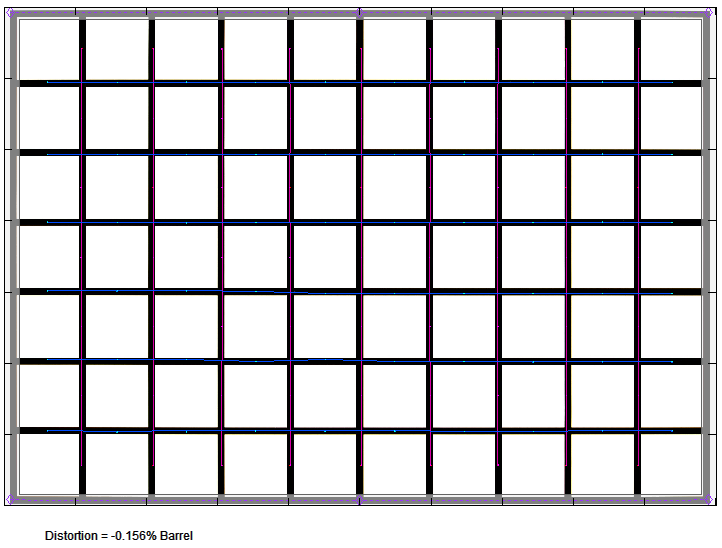
Vignetting
The light falloff characteristic is typical for a fast medium tele lens. At f/2, the vignetting is clearly visible (1.7EV), albeit not extreme. Stopping down to f/2.8 improves the light falloff substantially, and it's mostly irrelevant from f/4 onward.

MTF (resolution)
So far many of the tested lenses struggled with the excessive resolution of the EOS 5Ds R (50 megapixels) but, surprisingly, the Laowa lens managed just nicely here.
The center and near-center quality are already exceptionally high at f/2 (T/3.2). The borders manage to cross the very good mark, whereas the extreme corners are a bit soft, albeit not terribly so. Stopping down to f/2.8 boosts the (near-)center to outstanding territory, and the outer image region is now also sharp. The peak performance is reached at f/4. Beyond diffraction is a limiting factor with a decreasing performance the more you stop down. At f/11, the quality is still good to very good across the frame. f/22 (not shown) should be avoided (as usual) unless required.
The centering quality of the tested sample was good. Field curvature is not an issue.
Please note that the MTF results are not directly comparable across the different systems!
Below is a simplified summary of the formal findings. The chart shows line widths per picture height (LW/PH) which can be taken as a measure of sharpness.
If you want to know more about the MTF50 figures, you may check out the corresponding Imatest Explanations
Chromatic Aberrations (CAs)
Lateral chromatic aberrations (color shadows at harsh contrast transitions) are very well controlled, with an average CA-pixel width of around 0.6px at the image borders.

Bokeh fringing
Bokeh fringing (non-coinciding focal planes of various colors), sometimes called "bokeh CAs", is a color defect that is often seen in images taken with fast lenses. You may notice the slightly magenta-to-green color shift in the foreground and background of the sample crops below. It is most pronounced at f/2 and decreases the more you stop down. In this case, it's mostly gone from f/4 onward.
If you observe our image series below, you will notice that the focus point moves slightly to the back the more you stop down - these are so-called residual spherical aberrations. The effect is comparatively small in this case, so from a real-life perspective, you don't really need to worry except in close-focus scenarios.
|
Move the mouse cursor over the f-stop marks below to observe the respective LoCAs
|
| f/2 |
f/2.8 |
f/4 |
f/5.6 |
|
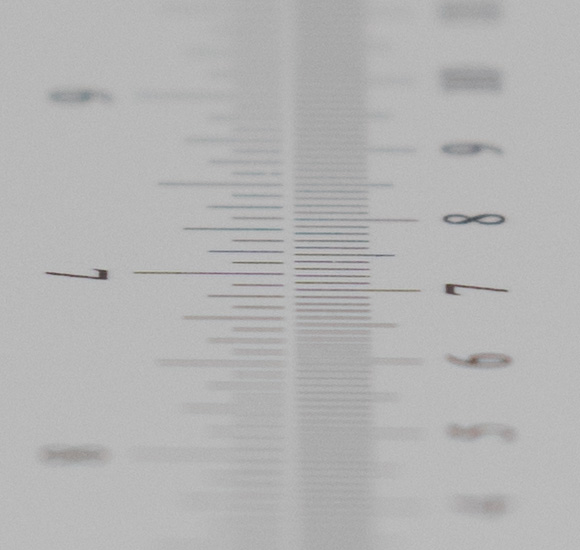
|
Bokeh
More than anything else, the Laowa 105mm f/2 STF has been optimized for achieving a silky bokeh (out-of-focus blur). As mentioned, it features a so-called apodization (APD) element. The APD element, positioned next to the aperture, is similar to an ND filter which is thin in the center but increases its thickness to towards the periphery. As such, it gradually reduces the amount of light transmission resulting in a diffused out-of-focus rendition.
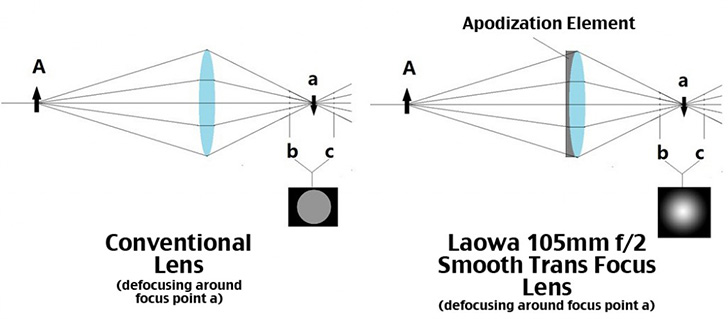 This also works out nicely in the real life - at least at a fully open aperture. As you can see below, the highlight discs don't show any outlining but are getting diffused towards the edges. The inner zone of the disc is also very smooth. Interestingly an outlining effect develops the more you stop down from f/2.
It is worth noting that this works best as long as the brightness of the highlight discs is not extreme. If it is, the ND-effect diminishes because there's a limit to the dynamic range of the camera's sensor.
This also works out nicely in the real life - at least at a fully open aperture. As you can see below, the highlight discs don't show any outlining but are getting diffused towards the edges. The inner zone of the disc is also very smooth. Interestingly an outlining effect develops the more you stop down from f/2.
It is worth noting that this works best as long as the brightness of the highlight discs is not extreme. If it is, the ND-effect diminishes because there's a limit to the dynamic range of the camera's sensor.
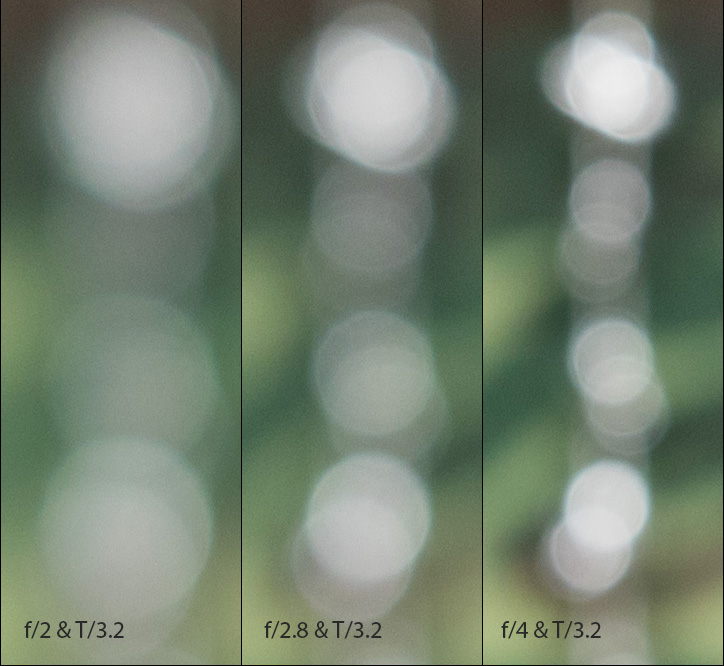 Alternatively to the standard f-aperture aperture, you can also close the T-aperture. Honestly, it is a little hard to spot a substantial difference - which is probably why Fujifilm didn't bother to add a secondary ring. The T-ring is stepless, though - this comes in handy if you are into movies.
Alternatively to the standard f-aperture aperture, you can also close the T-aperture. Honestly, it is a little hard to spot a substantial difference - which is probably why Fujifilm didn't bother to add a secondary ring. The T-ring is stepless, though - this comes in handy if you are into movies.
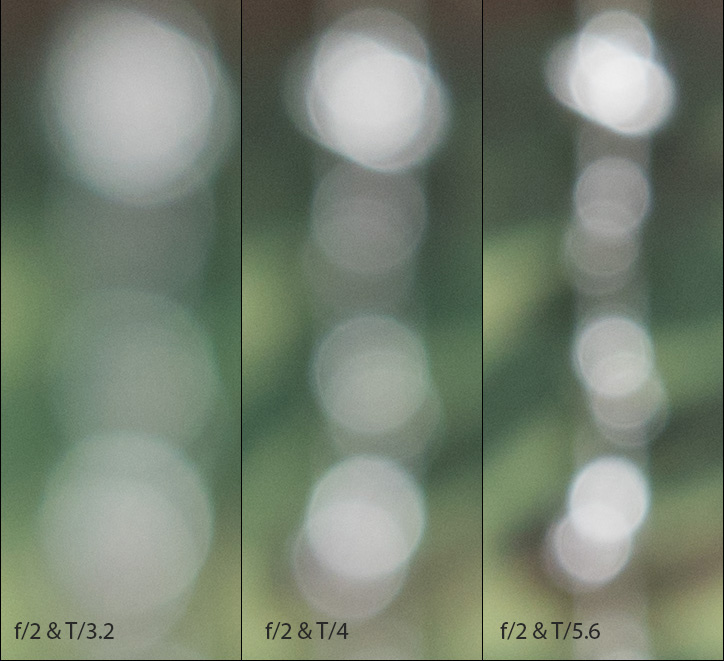 You are probably a bit bored by this sentence - the highlight discs deteriorate towards "cat's eyes" near the image borders at a fully open aperture. Stopping down will reduce the effect.
You are probably a bit bored by this sentence - the highlight discs deteriorate towards "cat's eyes" near the image borders at a fully open aperture. Stopping down will reduce the effect.
 The silky bokeh is also obvious in the general image blur both in the image background, albeit less so in the image foreground.
The silky bokeh is also obvious in the general image blur both in the image background, albeit less so in the image foreground.

Flare
So far, our findings didn't reveal a real optical weakness, but there is one - the Laowa lens struggles in backlit situations, especially when the light source is just outside of the image field. To be fair - many tele lenses struggle here, but the Laowa struggles more than most. The sample image below was taken WITHOUT a lens hood. Obviously not a good idea because of the resulting glare. Of course, we pushed it a little there, so this is not a problem that you would face in most scenes.

|